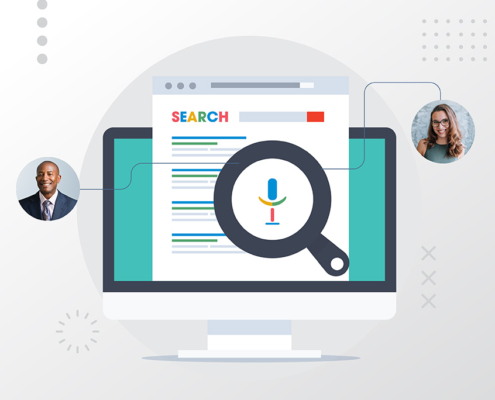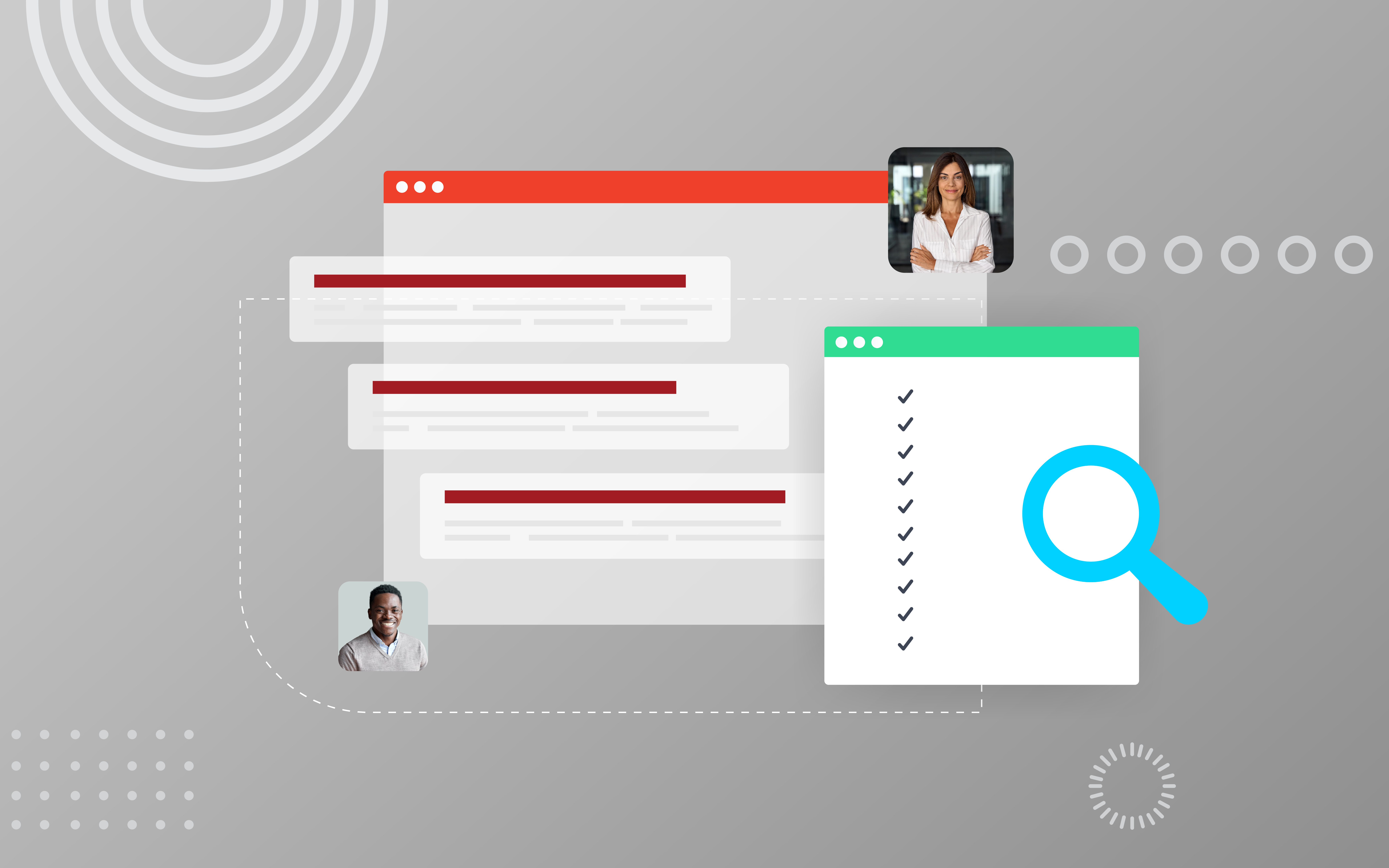

Many people tend to create a checklist of everything they need to pack before traveling. Bag? Check. Wallet? Check. Plane ticket? Check.
Checklists are essential for ensuring everything runs smoothly; the same can be said for your marketing efforts. Many marketing experts create email campaign checklists to make sure that what’s presented to potential buyers in their target market yields results for their business growth efforts.
Here’s a checklist we’ve created to help you accelerate your email marketing efforts:
- Checklist Item #1: Set Email Marketing Campaign Goals
- Checklist Item #2: Assign Roles in the Email Sign-Off Process
- Checklist Item #3: Create a Project Timeline
- Checklist Item #4: Follow the Latest Email Marketing Best Practices
- Checklist Item #5: Build Market-Focused Email Lists
- Checklist Item #6: Explore Where Email Marketing Automation Can Be Implemented
- Checklist Item #7: A/B Test Your Emails
- Checklist Item #8: Set Email Metric Goals
Checklist Item #1: Set Email Marketing Campaign Goals
What do you hope to achieve from sending email blasts? More sales appointments set? More traffic to your company website? Whatever your email marketing goal, you need to define it from the get-go to create the right email content.
Your email content should align with the overall goal of your email marketing efforts. Here are some goals to consider and tips for creating calls to action (CTAs) that help meet those goals:
More appointments set: If you want to generate more sales, you must present potential buyers with email content explaining your product and service offerings. Additionally, your email content should show off the impact your company has made on businesses similar to theirs. A CTA on these email marketing materials should encourage users to schedule a demo or sales appointment with one of your internal salespeople or account executives. However, this also depends on what stage they’re in the buyer’s journey.
Generate traffic for your website: If the goal of your email campaign is to generate more traffic for your website, you must provide readers with content that encourages them to learn more about your company, products, and services. CTAs on these email marketing materials should drive them to solutions pages or blogs relevant to their industry pain points. However, remember to be careful when inserting links, as too many links can cause email deliverability to drop.
If you want to get more email sales appointments, read our blog here for our insight.
Checklist Item #2: Assign Roles in the Email Sign-Off Process
Email marketing is more than drafting copy and hitting send. It requires an eye-catching design that’s easy to read on desktops and mobile devices, copy that piques the interest of potential buyers, and advanced insight into what prospects in your target audience are looking for in a product or service provider.
An email sign-off process is when sales and marketing teams have a streamlined structure in place to ensure everything included in an email has been approved, messaging is in line with your brand voice, and no crucial part of the email is left behind. For example, have you ever intended to send an email with an attachment, and you press send too quickly before you get the chance to attach it? Let’s face it, we’ve all been there once or twice. While it’s not that big of a deal, it can be if you’re sending sales emails to thousands of decision-makers in your sales pipeline—which is what makes an email sign-off process so important.
For an email marketing strategy that yields results, you need to assign your employees specific roles in the sign-off process. Some of the most crucial roles in the outbound email sign-off process include:
- Operations analysts to build prospect email lists
- Market researchers to learn about potential buyer pain points
- Email copywriters to write user-focused email content
- Designers to create consistently branded email templates
- Email editors to ensure content is easy to digest
- Logistics personnel to avoid emails hitting spam filters
Checklist Item #3: Create a Project Timeline
Once you determine the key players involved in developing email marketing content, creating a campaign process flow chart is vital. This flow chart ensures that everything occurs in an order that makes sense for everyone’s role, so everyone involved can complete their part of the email campaign with minimal hiccups.
For example, a campaign process flow chart could be as follows:
Step 1. Operations analysts build the prospect list and discover common pain points
Step 2. Email copywriters write content based on operation analyst insight
Step 3. Designers take content written by copywriters and input it into an engaging format
Step 4. Editors review copy and design to ensure it’s user-friendly
Step 5. Email logistics specialists check to make sure sales emails will go to inboxes
A campaign process flow chart is essential for keeping email marketing campaign creation productive with little downtime, giving you and your marketing teams more time to analyze campaigns and make the necessary adjustments to maximize your ROI.
Marketing campaign flow charts are also crucial for streamlining the order in which specific emails are sent and at what time. Emails don’t just appear in inboxes by chance. A strategy must be developed to capture the attention of decision-makers and seamlessly guide them through the sales funnel. This can be done quickly through your company’s CRM if you have the proper extensions or email automation tools (we’ll jump into email marketing automation a bit later).
Checklist Item #4: Follow the Latest Email Marketing Best Practices
With email marketing best practices changing constantly, you must stay up to date to get the most prospects to open your emails. As you craft your email campaigns, it’s essential that you stay in the loop about the best times to send sales emails so you can get the most out of your business growth efforts.
Here are some of the core best practices for B2B email marketing:
- Write engaging subject lines
- Create buyer-focused email lists
- Keep content personalized
- Share relevant content
- Include click-worthy CTAs
- Make sales emails mobile-friendly
- Practice email marketing automation
- Use data to drive better results
Checklist Item #5: Build Market-Focused Email Lists
Not every prospect in your sales pipeline is in the same stage of the buyer’s journey or has the same product or service interests. That means you need to build email lists around these core areas.
Market-focused email lists allow you to engage the most potential buyers with your sales emails. A market-focused email list is a list of prospects in your sales pipeline that have similar characteristics, whether it’s the stage of the pipeline they’re in or their product or service interests. It’s also crucial that you continuously cleanse these lists to avoid email spam filters and contact the best individuals for your company’s product or service.
To clean email lists, marketing experts must find what email addresses bounced back and find updated contact information through prospecting lists. Sales development reps can also cleanse email lists by making warm calls to businesses to ask if the prospect is still the main point of contact. If not, they can ask who would be the new best point of contact.
Checklist Item #6: Explore Where Email Marketing Automation Can Be Implemented
Email marketing automation provides many benefits to sales and marketing teams. While personalization of email content is essential, there are many ways you can automate marketing campaigns while keeping content customized.
When sending general content about your company or your industry as a whole, your email marketing efforts can be automated. But when a potential buyer responds to an email and wants more information, sales or marketing reps must respond to their inquiry personally. This allows business growth teams to communicate one-on-one with likely buyers rather than sending emails to every prospect in the sales pipeline.
As you implement your automated email marketing solution, consider following this short marketing automation checklist:
- Has an easy-to-use employee interface
- Uses various communication tools
- Nurtures sustainable prospect engagement
- Presents accurate email analytics
- Provides scalable user support
Checklist Item #7: A/B Test Your Emails
A/B testing is when marketing teams use a couple of different email styles and content options that share the same message. This could include testing different subject lines, greetings, email structure, imagery, CTAs, and more. A/B testing your emails is a good way to figure out what prospects you engage with the most. However, it’s important that you don’t test too many variables at once so you can easily keep track of how each email campaign is performing.
A/B testing your emails could lead you to change up the email content or even do something as simple as adjusting your email subject lines and call-to-action text buttons. Using a variety of approaches helps you learn more about the buyer personas of your target market, how quickly they want to move through the sales funnel, and how they prefer to be acknowledged via email.
Checklist Item #8: Set Email Metric Goals
As you send sales emails, it’s essential to consider what metric goals you want to achieve. Do you want to increase open rates? Drive more traffic to your website? Boost conversions? Setting email metric goals is vital for creating a strategy that drives the results you want. Once you have a good understanding of what you want, you can consistently measure these metrics over time to see where your campaigns are thriving and where they may need some adjustments.
Key Takeaways
Like travel preparation, your email marketing campaigns need a checklist to ensure everything is in place. An email campaign checklist allows you to streamline your sales and marketing functions and get the most ROI from your business growth efforts.
We use the same email marketing checklist at Sapper Consulting to accelerate our clients’ sales pipelines. If you want an inside look into how we’ll apply our email marketing lead generation processes to your company’s sales and marketing, schedule a demo with one of our sales reps!


